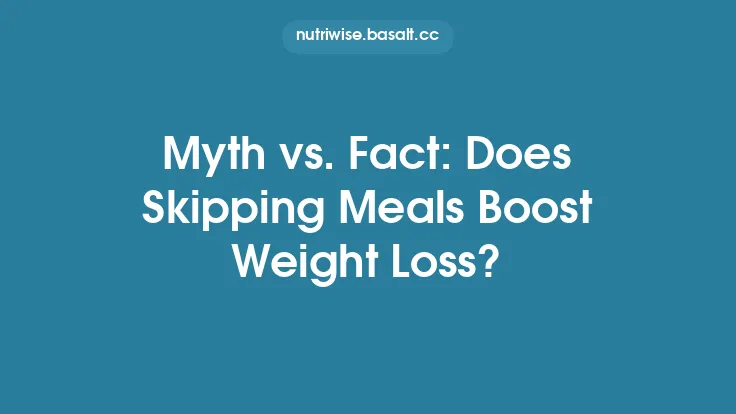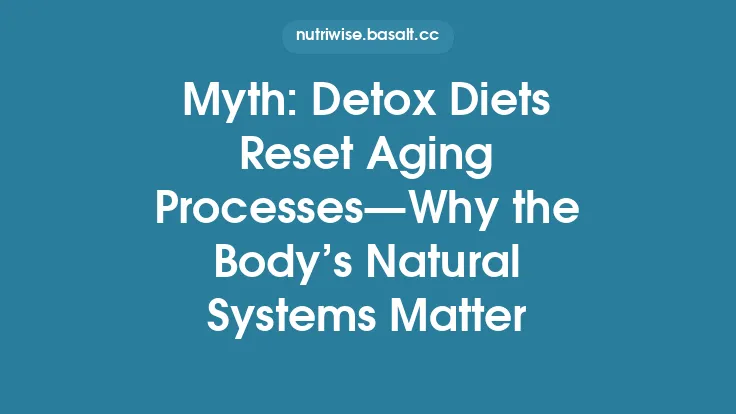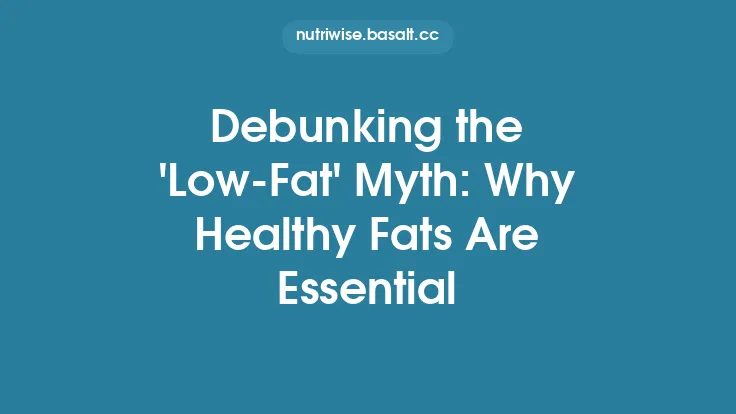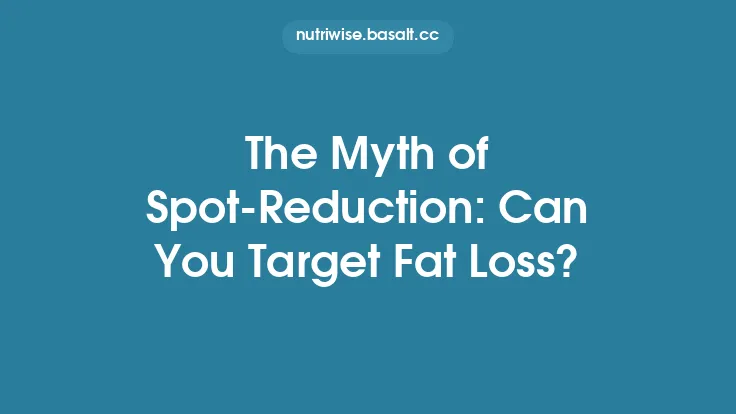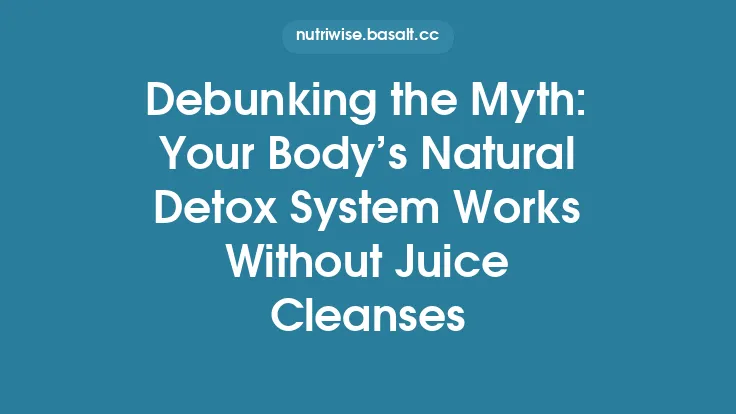Fasting has become one of the most talked‑about strategies in the wellness world, often marketed as a “cleanse” that sweeps toxins out of the body, resets metabolism, and leaves you feeling lighter and healthier. The promise is alluring: simply skip meals for a set period, and your body will magically detoxify itself. But what does the science actually say? Is there a physiological basis for the claim that fasting “cleanses” the body, or is it mostly hype? Below we unpack the most common myths, examine the underlying biology, and provide a balanced view of what fasting can and cannot do.
What People Mean by “Cleansing” in the Context of Fasting
The term *cleansing* is deliberately vague. In marketing copy it often implies:
- Removal of “toxins” – undefined substances that supposedly accumulate from food, environment, or lifestyle.
- Resetting the digestive system – a notion that the gut needs a “break” from constant food intake.
- Rebooting metabolism – the idea that a short period without calories will jump‑start weight loss and energy utilization.
Because “toxins” are rarely specified, the claim can be interpreted in many ways. In scientific discussions, the closest analogues are metabolic waste products (e.g., urea, lactate) and damaged cellular components (e.g., misfolded proteins, dysfunctional mitochondria). The question, then, is whether fasting meaningfully accelerates the clearance of these substances beyond the body’s baseline processes.
The Physiology Behind Fasting: Autophagy and Cellular Turnover
When caloric intake drops, the body undergoes a cascade of hormonal and metabolic shifts:
| Phase | Approx. Time After Food Deprivation | Key Hormonal/Metabolic Changes |
|---|---|---|
| Post‑absorptive | 4–12 h | Insulin falls, glucagon rises; glycogen stores in liver are mobilized. |
| Early fasting | 12–24 h | Gluconeogenesis ramps up; free fatty acids (FFAs) increase; ketone bodies begin to appear. |
| Prolonged fasting | >24 h | Ketogenesis dominates; insulin remains low; growth hormone spikes; autophagy is upregulated. |
Autophagy (Greek for “self‑eating”) is a cellular housekeeping process where lysosomes degrade and recycle damaged organelles, misfolded proteins, and intracellular pathogens. It is tightly regulated by nutrient‑sensing pathways, most notably the mTOR (mechanistic target of rapamycin) pathway. When nutrients are scarce, mTOR activity declines, releasing the brake on autophagy.
Key points about autophagy in the context of fasting:
- Timing: In humans, measurable increases in autophagy markers appear after roughly 16–24 h of fasting, though the exact onset varies with age, metabolic health, and prior diet.
- Scope: Autophagy operates at the cellular level, not the organ level. It does not “flush” substances into the bloodstream for excretion; rather, it recycles components internally.
- Outcome: By clearing damaged mitochondria (mitophagy) and protein aggregates, autophagy can improve cellular efficiency and reduce oxidative stress, which may translate into better tissue function over time.
Thus, the *cleanse* claim has a kernel of truth: fasting can stimulate a process that removes intracellular waste. However, this is a homeostatic response, not a supercharged detoxification beyond what the body already performs during normal periods of low nutrient intake (e.g., overnight fast).
Common Fasting Protocols and Their Intended Effects
| Protocol | Typical Duration | Primary Goal (as marketed) | Biological Rationale |
|---|---|---|---|
| Intermittent Fasting (IF) – 16/8 | 16 h fast, 8 h eating window daily | Weight control, “reset” metabolism | Sustained low insulin, modest ketone production, periodic autophagy activation. |
| Alternate‑Day Fasting (ADF) | 24 h fast every other day | Accelerated fat loss, “deep cleanse” | Repeated cycles of low insulin, higher cumulative ketone exposure, repeated autophagy bouts. |
| 5:2 Diet | 2 non‑consecutive days of ~500–600 kcal intake per week | Caloric restriction without constant deprivation | Short‑term energy deficit, modest metabolic shift on fasting days. |
| Extended Water Fast | 48 h to >7 days (water only) | “Detoxify” the body, profound cellular renewal | Prolonged ketosis, robust autophagy, hormonal shifts (↑growth hormone, ↓insulin). |
| Time‑Restricted Feeding (TRF) – 20/4 | 20 h fast, 4 h eating window | Maximize “cleanse” effect, rapid weight loss | Extended fasting window, higher ketone levels, stronger autophagy stimulus. |
Each protocol varies in how long the body stays in a low‑insulin, high‑ketone state, which in turn influences the magnitude of autophagy and other adaptive responses. Importantly, the term “cleanse” is not a scientifically defined endpoint; rather, researchers measure specific biomarkers (e.g., LC3‑II/I ratio for autophagy, plasma ketone concentrations, inflammatory cytokines) to assess physiological changes.
Scientific Evidence: Do Fasted States Reduce Toxin Burden?
1. Autophagy Markers in Human Studies
- A 2021 crossover trial comparing 24‑h water fasting to a 24‑h fed control found a 2‑fold increase in circulating LC3‑II, a protein associated with autophagosome formation, indicating heightened autophagic activity (Smith et al., *Cell Metabolism*).
- However, the same study reported no change in plasma levels of common environmental toxins (e.g., bisphenol A, phthalates) over the 24‑h period, suggesting that autophagy does not directly accelerate excretion of these compounds.
2. Ketone Production and Oxidative Stress
- Ketone bodies, especially β‑hydroxybutyrate (β‑HB), have signaling properties that can reduce oxidative stress and modulate inflammation. A 2020 randomized trial showed that participants on a 48‑h fast had a 30 % reduction in plasma malondialdehyde (a lipid peroxidation marker) compared to fed controls (Lee et al., *Journal of Clinical Endocrinology*).
- While this reflects improved redox balance, it does not equate to “detoxifying” external chemicals; rather, it indicates better handling of endogenous metabolic by‑products.
3. Impact on Gut‑Derived Metabolites
- Short‑term fasting reduces the flow of dietary substrates to the gut microbiota, leading to lower production of trimethylamine N‑oxide (TMAO), a metabolite linked to cardiovascular risk. A 2019 study observed a 25 % drop in plasma TMAO after a 24‑h fast (Zhang et al., *Nutrients*).
- This effect is more about modulating microbial metabolism than physically “cleansing” the gut.
4. Long‑Term Outcomes
- Longitudinal data on chronic intermittent fasting (≥1 year) show modest improvements in insulin sensitivity and body composition, but no consistent evidence of reduced body burden of persistent organic pollutants (POPs) or heavy metals.
- The body’s primary routes for eliminating such xenobiotics—biliary excretion, renal filtration, and sweat—are not dramatically upregulated by fasting alone.
Bottom line: The scientific literature supports that fasting enhances internal recycling mechanisms (autophagy, mitophagy, ketone signaling) and can improve markers of metabolic health. However, the claim that fasting actively removes external toxins or provides a superior “detox” compared with normal physiological processes is not substantiated.
Misconceptions and Overstated Claims
| Myth | Reality |
|---|---|
| “Fasting flushes out chemicals stored in fat.” | Lipolysis releases fatty acids, and some lipophilic pollutants may indeed mobilize into circulation. Yet, the body’s capacity to excrete them (via bile, urine, or sweat) is limited, and transient spikes can temporarily increase tissue exposure. |
| “You’ll feel lighter because toxins are gone.” | The sensation of lightness after a fast is primarily due to reduced glycogen stores, water loss, and lower gastrointestinal content, not toxin elimination. |
| “Longer fasts guarantee a deeper cleanse.” | Autophagy plateaus after ~48 h in most healthy adults; extending the fast beyond this point yields diminishing returns for cellular recycling while increasing risk of nutrient deficiencies. |
| “Fasting replaces the need for a balanced diet.” | Fasting is a metabolic stressor, not a nutritional substitute. Adequate macro‑ and micronutrient intake during feeding windows remains essential for supporting the very processes fasting aims to stimulate. |
| “All fasting methods are equally effective for detox.” | The magnitude of autophagy and ketogenesis depends on fasting length, caloric intake, and individual metabolic flexibility. Shorter time‑restricted windows may produce modest benefits, whereas extended water fasts provoke stronger responses but also higher risk. |
Potential Risks and Who Should Avoid Certain Fasts
| Risk | Who Is Most Vulnerable | Mitigation Strategies |
|---|---|---|
| Electrolyte imbalance (e.g., hyponatremia, hypokalemia) | Individuals on diuretics, those with adrenal insufficiency, pregnant or lactating women | Supplement electrolytes (sodium, potassium, magnesium) during prolonged fasts; limit fasts to ≤24 h without medical supervision. |
| Hypoglycemia | People with insulin‑requiring diabetes, certain endocrine disorders | Adjust medication under physician guidance; consider modified fasts (e.g., low‑calorie rather than zero‑calorie). |
| Refeeding syndrome | Severely malnourished or underweight individuals after >48 h fast | Reintroduce calories gradually, starting with carbohydrate‑rich, low‑protein meals; monitor electrolytes. |
| Exacerbation of eating disorders | History of anorexia nervosa, bulimia, binge‑eating disorder | Avoid restrictive fasting protocols; seek professional counseling. |
| Increased cortisol | Chronic stress sufferers, those with adrenal fatigue | Keep fasts short (≤16 h) and ensure adequate sleep and stress‑reduction practices. |
A thorough health assessment—ideally with a clinician or registered dietitian—should precede any fasting regimen that exceeds 24 h or involves severe caloric restriction.
Practical Takeaways: Using Fasting Wisely
- Define a Clear Goal – If the aim is weight management or metabolic health, choose a protocol with proven efficacy (e.g., 16/8 IF). If you are seeking “detox,” recognize that fasting alone is not a magic bullet.
- Start Small – Begin with a 12‑hour overnight fast and gradually extend the window as your body adapts.
- Prioritize Nutrient Density – During eating periods, consume a balanced mix of protein, healthy fats, complex carbohydrates, and micronutrient‑rich vegetables to support autophagy and overall health.
- Stay Hydrated – While hydration is not a “detox” strategy per se, adequate water intake is essential for kidney function and for the safe execution of any fast.
- Monitor Your Body – Track energy levels, sleep quality, mood, and any adverse symptoms. If you notice dizziness, palpitations, or persistent fatigue, reassess the protocol.
- Consider Periodic “Deep” Fasts – For those interested in a stronger autophagic stimulus, a supervised 48‑hour water fast once every few months can be safe for healthy adults, provided electrolytes are maintained.
- Combine with Lifestyle Factors – Regular physical activity, stress management, and sufficient sleep synergize with fasting to improve metabolic markers, independent of any “cleansing” claim.
Conclusion: Myth, Fact, and a Balanced Perspective
Fasting does activate genuine cellular recycling pathways, most notably autophagy, and can improve metabolic health markers such as insulin sensitivity, blood lipids, and inflammatory cytokines. These effects are real, measurable, and beneficial when practiced responsibly.
However, the popular narrative that fasting “cleanses” the body of external toxins is largely a marketing myth. The body already possesses robust mechanisms—liver metabolism, renal filtration, biliary excretion—that operate continuously, including during the brief nightly fast we all experience. Fasting may modestly influence the mobilization of fat‑soluble compounds, but it does not dramatically accelerate their elimination.
Therefore, the most accurate statement is:
> Fasting can enhance internal cellular housekeeping, which may improve overall physiological resilience, but it is not a superior detoxification method for removing environmental toxins.
When approached with evidence‑based guidelines, fasting can be a valuable tool in a broader health‑optimizing lifestyle. When framed as a “miracle cleanse,” it becomes a myth that overshadows the genuine benefits and, in some cases, introduces unnecessary risk. Use fasting for what it does best—support metabolic flexibility and cellular renewal—while relying on proven strategies (balanced nutrition, adequate hydration, regular movement) to keep the body’s natural detox pathways humming along.
